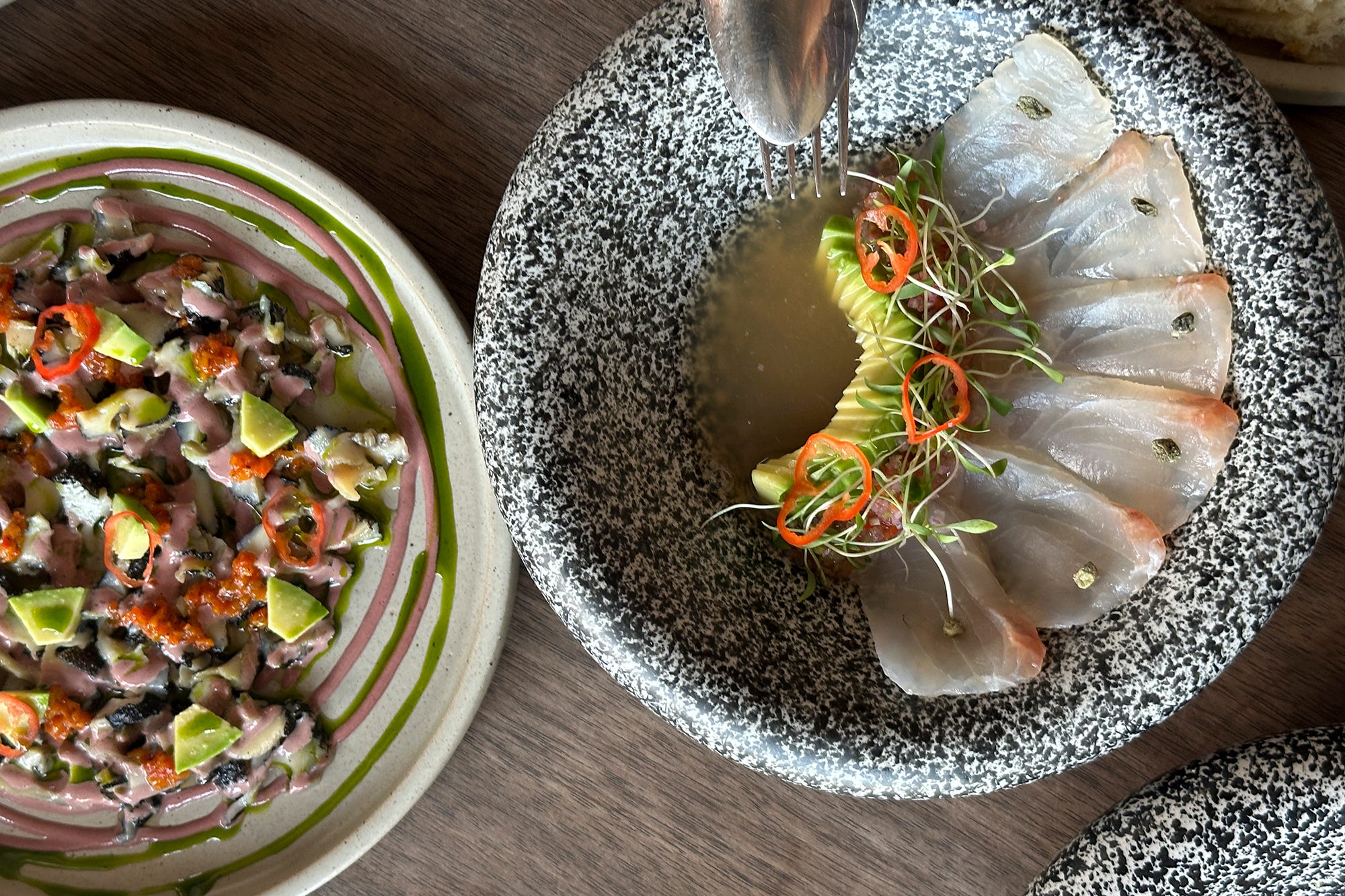Lapas al Olivo & Raw Razor Clams
Navegante in Punta Hermosa and La Rosa Nautica in Lima rethink coastal Peruvian food.
At Navegante, the chef Diego Muñoz’s restaurant in Punta Hermosa, a surf town south of Lima that has seen a surge of restaurant openings since the pandemic, they use limpets (Fissurella peruviana) instead of octopus in the classic dish pulpo al olivo. Called lapas in Peru, these cone shaped shellfish that are found clinging to rocks on the intertidal zone, get covered in a sauce made from purple olives, slices of avocado and some chiles roasted with some aromatics, a technique called ají soasado that is not used nearly enough. It’s one of those particularly Peruvian flavor combinations of the most humble ingredients that you could eat in a fine dining restaurant with nice plating or tousled together in a plastic cup, but it would be the best thing you ate that day either way.
Aside of how delicious they can be, it’s a rather abundant species, while octopus is under constant threat of overfishing. Still, I hardly ever see lapas on a menu in Peru. In the far south, on the southwestern coast near Tacna and Arequipa, you’ll occasionally see lapas arrebozadas, where they are breaded and fried whole, or zarza de lapas, in a seafood salad with sliced onions, chiles, corn and broad beans.
I started to wonder why this species and others like it are being ignored and so many others are in constant threat from overconsumption, laws that favor industrial fisheries over artisan ones, climate change and habitat destruction. In theory, there is pride in the diversity of species throughout the coast, though in practice on restaurant menus, it’s not always the case.
Keep reading with a 7-day free trial
Subscribe to New Worlder to keep reading this post and get 7 days of free access to the full post archives.




